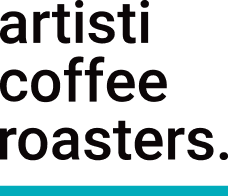Operating a cafe is not just about serving delicious coffee and scrumptious treats; it also involves making conscious efforts to reduce wastage. Wastage not only harms the environment but can also impact your bottom line significantly. In this blog post, we'll explore some practical strategies to help you minimize wastage in your cafe, leading to a more eco-friendly and profitable business.
1. Tackling Coffee Grind Wastage: Coffee grinds left behind during the brewing process can add up to a considerable amount of waste. To minimize this, start by managing the dosing technique and grind time to avoid overfilling the basket. Upgrading to a grinder with a better chute can also prevent coffee from ending up all over the bench. Using scales to measure the right amount of coffee for each cup will further prevent overdosing.
Dosing Pots to the Rescue: Consider using dosing pots instead of putting coffee directly into the portafilter. This way, you can ensure that all the grounds land in the basket, reducing unnecessary wastage.
2. Reusing Coffee Grounds Creatively: Don't let used coffee grounds go to waste; they have multiple uses beyond the bin. Coffee grounds are rich in nutrients like nitrogen, phosphorus, and potassium, making them an excellent addition to compost or garden soil. Additionally, they can act as a natural deterrent for pests like ants, slugs, and snails. Moreover, the abrasive texture of coffee grounds makes them a useful cleaning scrub for greasy surfaces and even a natural exfoliant for the skin.
3. Implementing an Efficient Knock Tube Bag System: To avoid excess coffee going into landfill and to make it easy for staff to manage waste, use knock tube bags. These bags not only keep the bins clean but also allow customers to collect coffee grounds if they wish. By reducing landfill waste, you'll also save money on waste bin collection costs.
4. Minimizing Milk Wastage: Milk wastage is a common issue in cafes. Encourage baristas to be mindful of the amount of milk they use for each coffee type. Different coffee drinks require varying milk fill levels in the jug. Avoid tipping leftover milk down the sink by using the "bucket test" to demonstrate the wasted milk's real cost.
5. Optimize Frothing Techniques: Train your baristas to froth milk correctly for different coffee drinks. More froth means starting with less milk, which reduces costs. Having the right-sized milk jugs for various cup sizes ensures there is no leftover milk. Teach baristas to split milk jugs, allowing them to make two cups from one jug, saving milk and time.
6. Sustainable Packaging and Supplies: Reduce waste from packaging and disposable supplies by adopting eco-friendly alternatives. Ask customers if they need bags or trays for takeaway orders to avoid unnecessary waste. Encourage reusable cups and consider implementing a mug return system, which can also be a great way to promote your brand.
7. Energy-Saving Equipment: Invest in energy-saving equipment, such as coffee machines with eco mode settings and energy-efficient appliances like milk fridges. These upgrades can lead to significant savings on your power bill over time.
Conclusion: By implementing these practical strategies, you can make a positive impact on the environment while also saving money for your cafe. Reducing wastage not only enhances your bottom line but also aligns your business with the growing demand for sustainability in the food and beverage industry. So, let's strive for a greener and more profitable future for your cafe!
Watch our video below about Reducing Waste in a Cafe.




